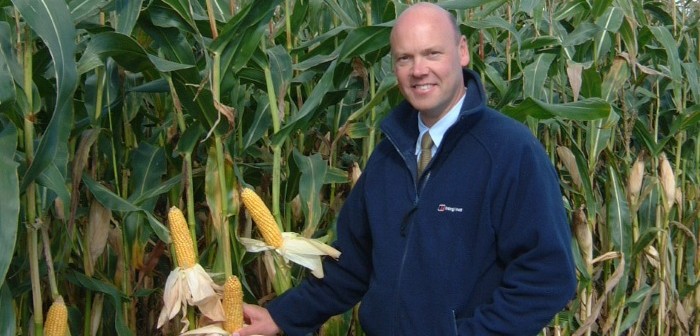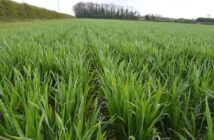With maize harvest in full swing, 2016 seems to be living up to the bumper year as predicted.
“The weather conditions have been near perfect,” says Dr Simon Pope, Crop Protection Manager for Wynnstay.
“Every maize variety requires a certain number of heat units to ripen and mature, and this year temperature has not been a limiting factor.
“Between 2014 and 2015, there was a difference 20% in the total accumulated heat units, which is why there was such a contrast in the quality of the crop. This season, yields are substantially better,” he adds.
“Even though we’ve had more heat, we’ve also had a sufficient rainfall at just the right time for the maize crop to flourish, which has been perfect.”
In the west, new Limagrain variety Reason is performing exceptionally well, doing exactly what it’s bred for. “We’ve seen early maturing, high yielding crops with absolutely superb cobs which has suited farmers in the area.
“We know of one crop of Reason which was weighted off at 26 tonnes/acre, and harvested at the end of September. This is exceptional but it showcases what the variety can do,” says Dr Pope
Other maize varieties are also performing well, achieving high DM yields. The aim is to have 30% DM yield at harvest, with 50 to 60% of this DM content coming from the cobs.
“This year’s maize has produced large cobs, and with it the high DM contents which farmers need to produce a quality forage feed for their livestock,” he says.
Dr Pope explains that there are usually some concerns earlier in the season over eyespot in crops.
“The disease requires cool, wet conditions to reach epidemic levels, but, some areas such as south west Wales are a hot bed and have suffered again this year,” he explains.
“A well-timed fungicide treatment can mitigate against any problems in the crop, and looking forward this is something growers should consider for 2017.”
Overall, the season couldn’t have gone better for growing maize.
“2016 has been a great year, and historically when we’ve had a good growing season and harvest, it leads to an increase in maize acreage for the following year.




